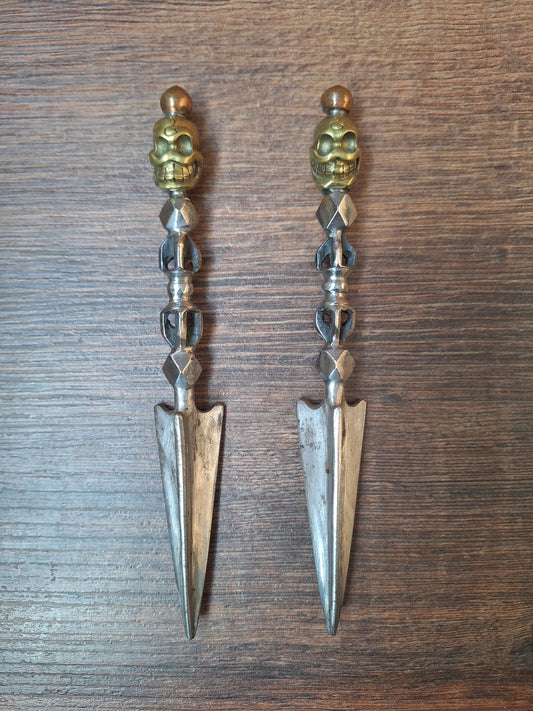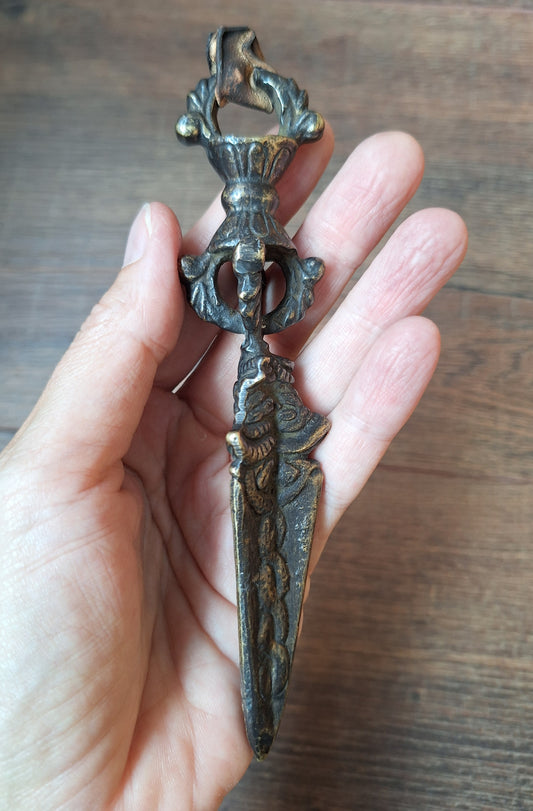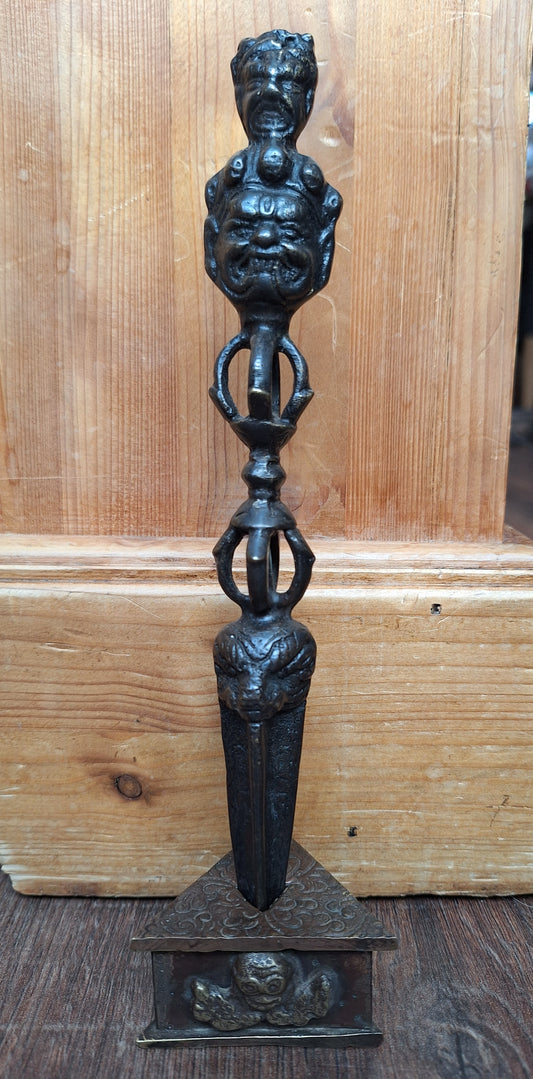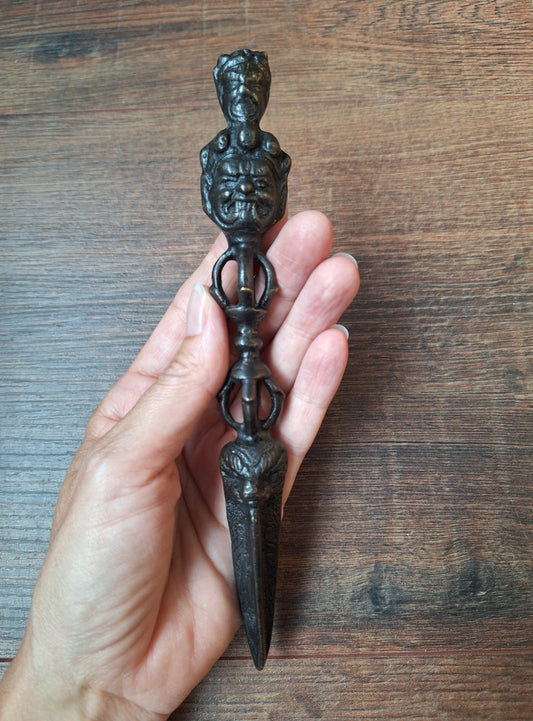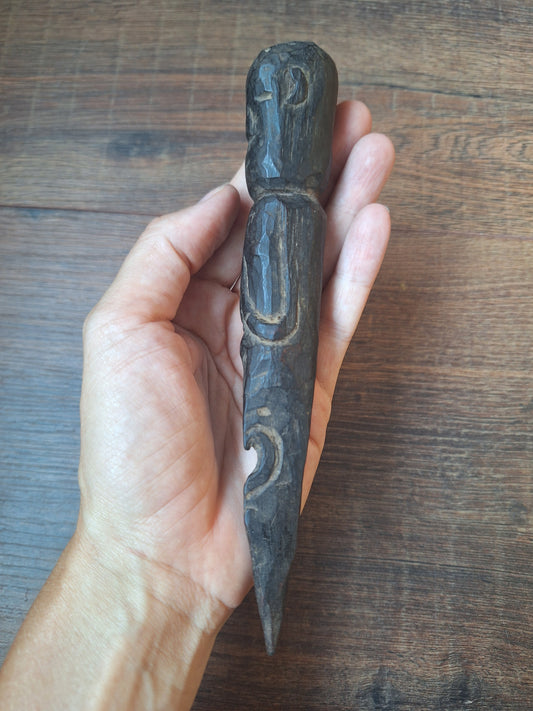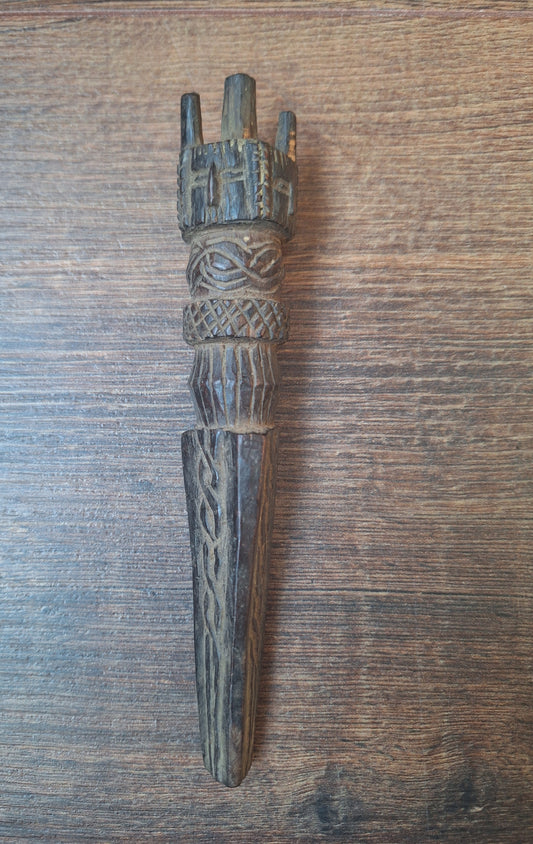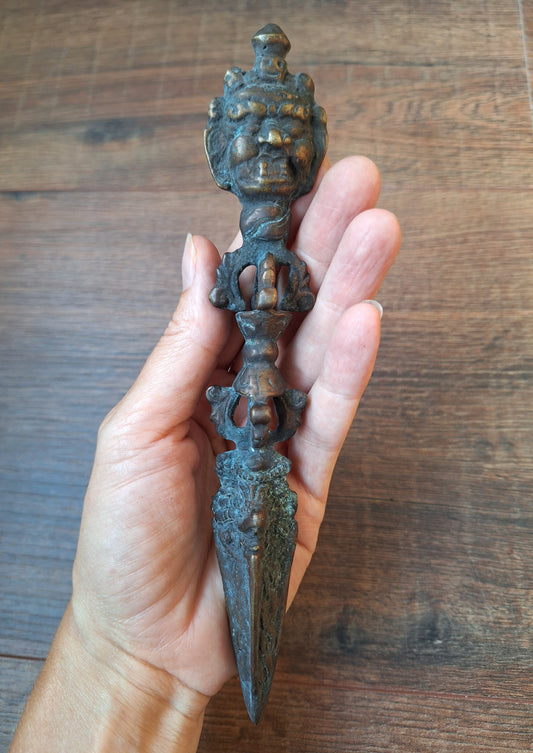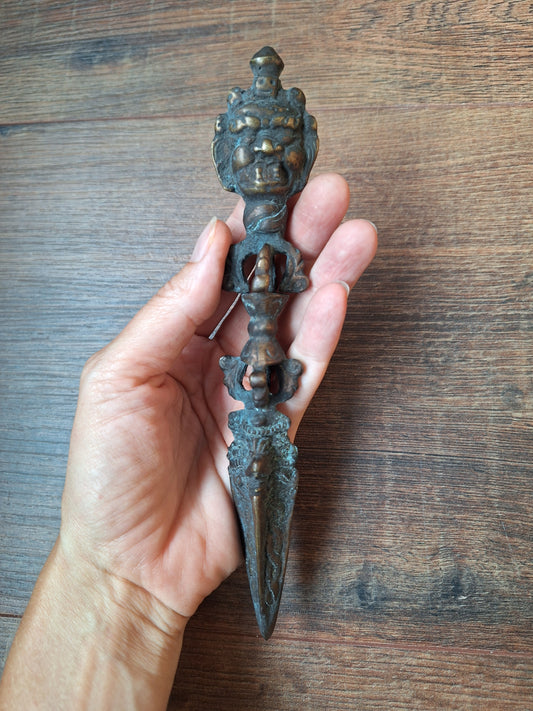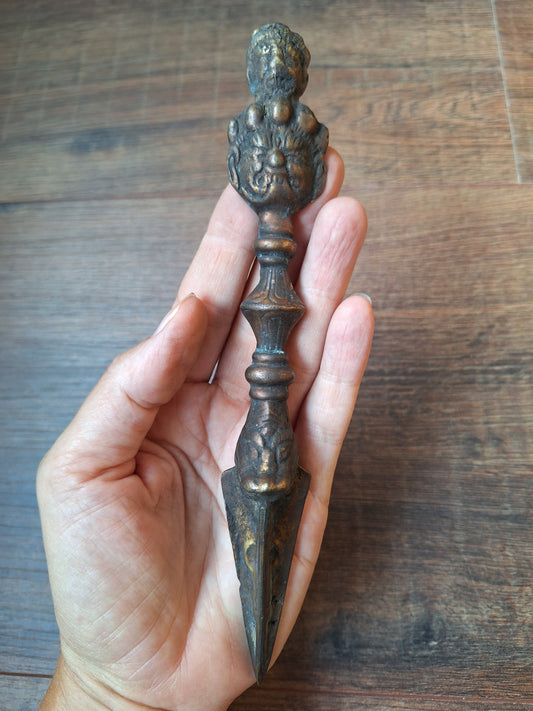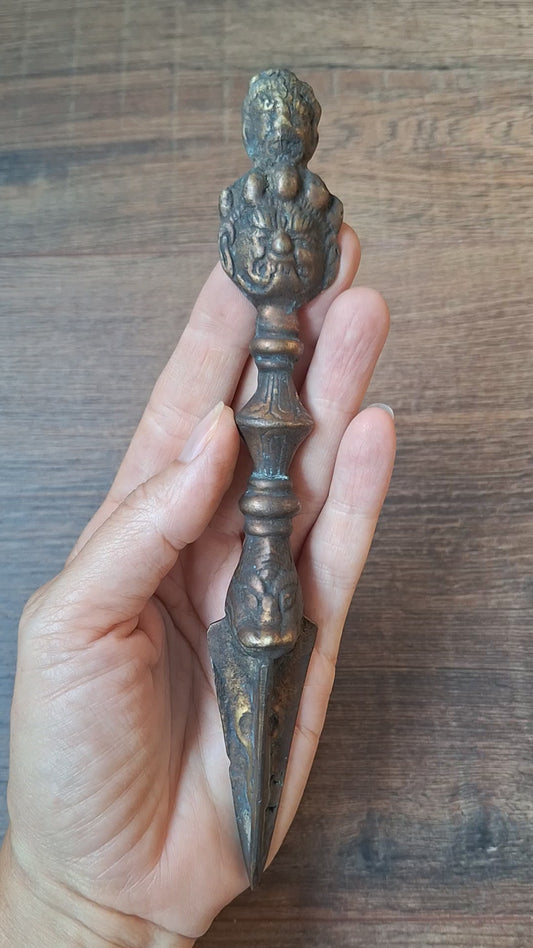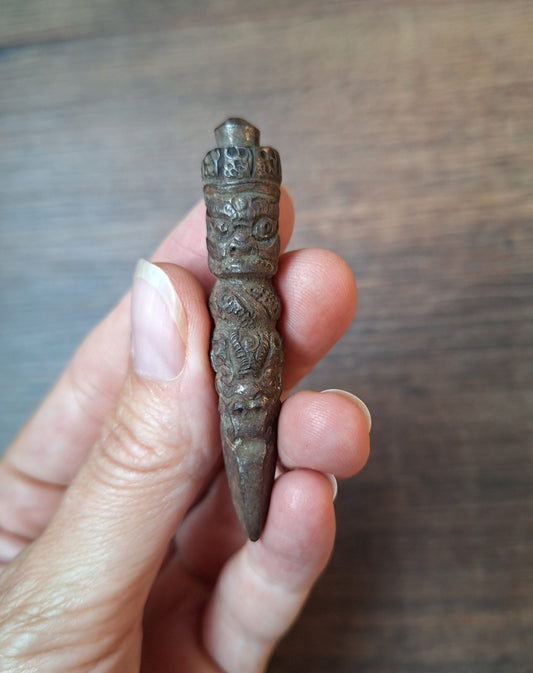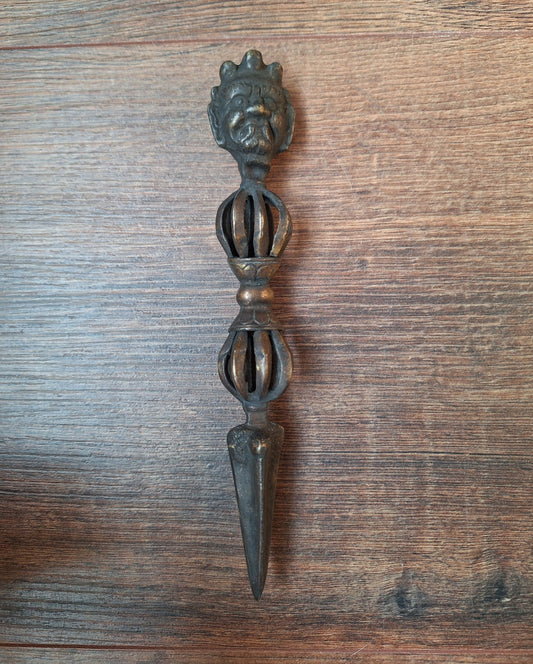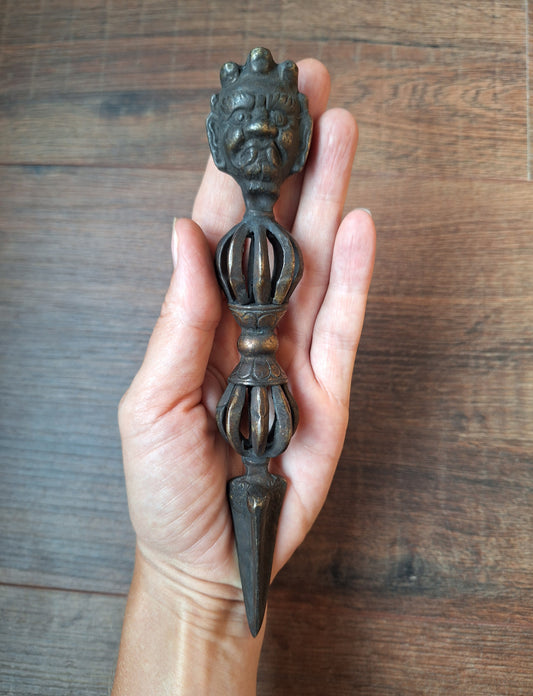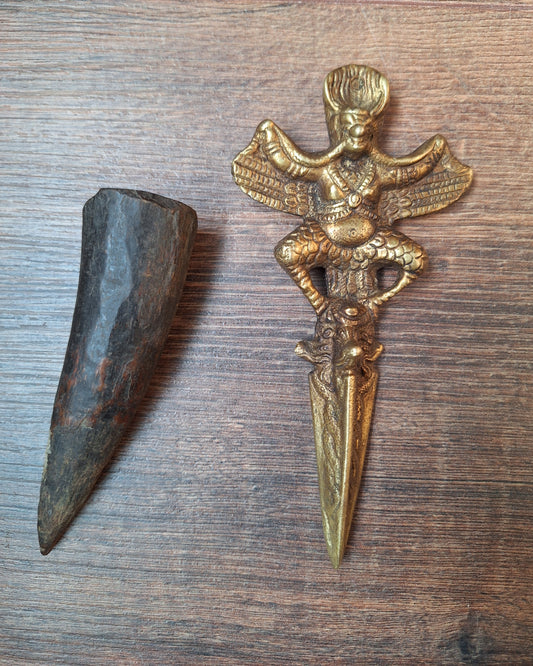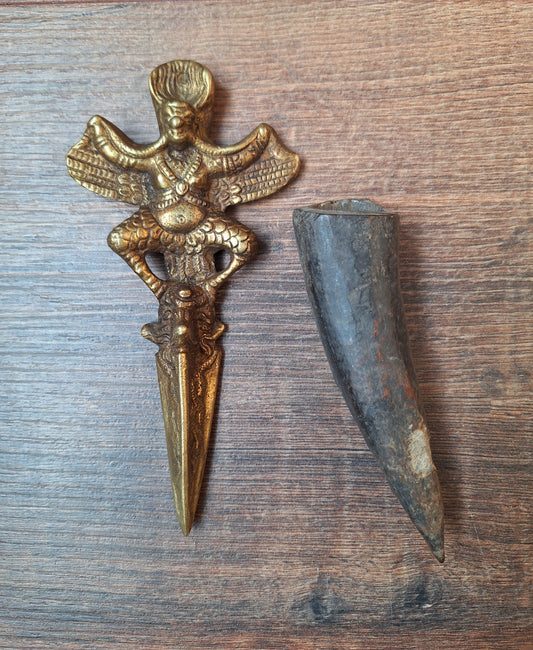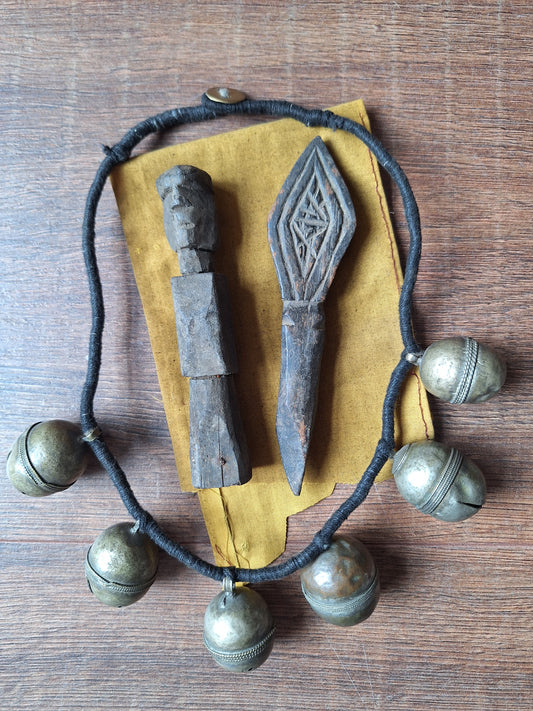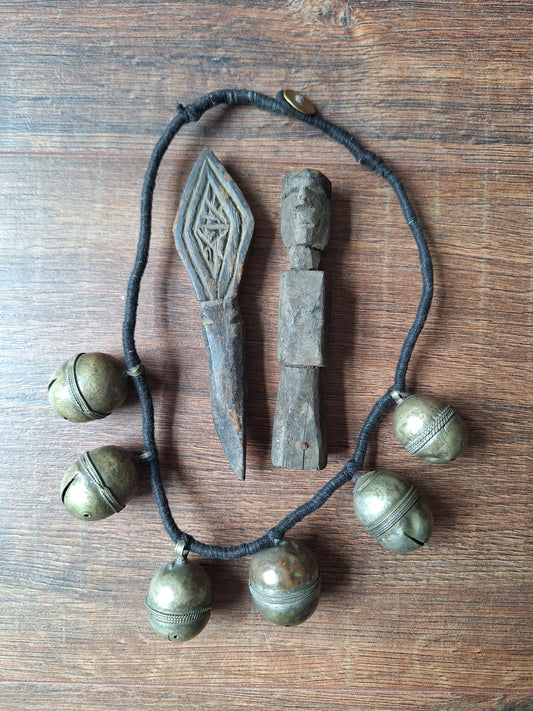Collection: Ritual Attributes; Phurba's
The phurba is a ritual triangular dagger or knife common in vast territories of Asia, including India, Pakistan, Nepal, Tibet, Mongolia, China, Japan and others. In different regions it might be known by different names such as kila, khurpa, phurpa or turpi. There is no exact data on the duration of the use of phurba for ritual purposes, but according to references in the annals and finds from excavations it can be established that is has been used at least 3500 years. The typical shape might be traced back to the wooden stakes or pegs used to secure nomadic tents.
Phurba’s can be made from different materials such as metal, wood, bone, horn or even quartz crystal. Roughly speaking it can be said that metal ones are more likely to be used by tantric Buddhist practitioners and wooden ones by shamanic practitioners.
In the appearance of a phurba there’s a lot of symbolism to be seen. There are countless variations in the decorations, especially when it comes to the shamanic wooden ones, which are often carved with symbols very specific for the individual shaman. That being said, some symbolism and designs are quite common, some of which are mentioned here below.
It can be said that lengthwise the phurba symbolizes the axis of the world, in which the three levels of Middleworld (the handle), Upperworld (the pommel) and Underworld (the blade) can be recognized.
The three facets of the blade symbolize all kinds of trinities, like in time (past, present, future) or state (creation, preservation, destruction) or a trinity of poisonous mental states which need to be overcome (anger, ignorance and illusion). The blade is often held in the mouth of a fierce being. Often a mythical watermonster called a Makara, sometimes a Garuda or a wrathful manifestation of Ganesha. The blade sprouting from the mouth of such a ferocious being represents its fierce activity and power.
The blade often shows depictions of intertwined naga spirits, reminiscent of the Caduceus staff and indeed implying the medicinal work that can be done with a phurba. The naga’s are often depicted going up the blade, symbolizing the bringing of fertility and abundance, and sometimes going down the blade, symbolizing the releasing of heavy energies.
The middle area of the phurba often shows a depiction of the vajra (dorje) symbol, symbolizing an irresistible force which can cut through anything while being indestructible itself. Also variations of the Shrivatsa (endless knot) symbol are often found, representing the soul’s eternity, the interconnectedness of everything in the universe and the importance of maintaining balance and harmony.
The pommel of the phurba is the part where most variation in design can be found, showing a depiction of a specific deity or spirit presiding over the ritual activity of that specific phurba. Often a three-faced human head can be seen, each face showing a different humour; joyful, wrathful and peaceful, which can also be related to the three facets of the blade. Often this three-faced head represents the wrathful deity Vajrakilaya (Dorje Phurba), the main deity connected to all phurba activities.
But also other deities and spirits can be depicted on the pommel, such as Ganesha, or the horse-headed Hayagriva, or the monkey image of Lord Hanuman, or the typical Nepalese depiction of an ancestor in namaste or prayer position or a variety of bird motives.
There are many ways in which the phurba is used and in some traditions it is considered to be one of the main ritual attributes. In many traditions it is used during ritual actions for its protective qualities, keeping the space safe from distortion by dark spirits and protecting the souls of the participants from getting lost. Also the phurba can be used as an attribute for healing, using it to expel evil spirits and entities from the human body and as a tool for directing energy and giving blessings.
Please note that a phurba is not an attribute to be used lightly, it is always advisable to seek out instructions from both spirit- and human teachers to start working with it.
-
Iron phurba Citipati
Regular price €40,00 EURRegular priceUnit price / per -
Antique bronze phurba #12
Regular price €65,00 EURRegular priceUnit price / per -
Vintage bronze phurba #11, with stand
Regular price €55,00 EURRegular priceUnit price / per -

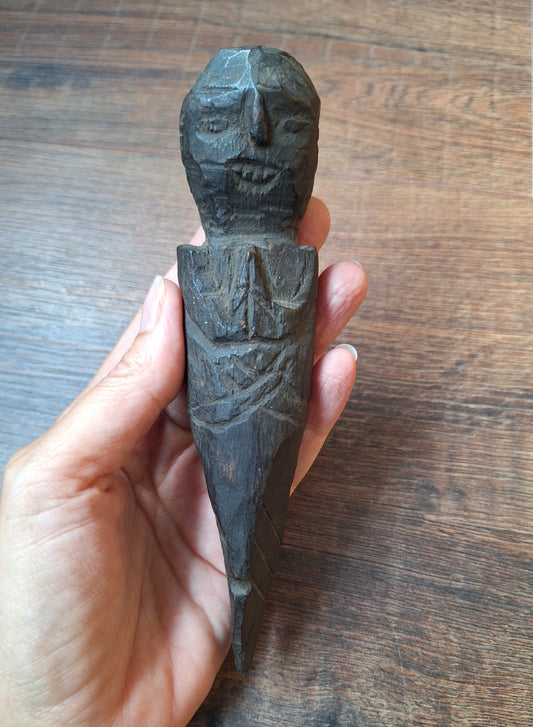 Sold out
Sold outAntique wooden phurba #60
Regular price €55,00 EURRegular priceUnit price / per -
Antique wooden phurba #59
Regular price €55,00 EURRegular priceUnit price / per -
Antique wooden phurba #58
Regular price €55,00 EURRegular priceUnit price / per -
Antique bronze phurba #10
Regular price €65,00 EURRegular priceUnit price / per -
Antique bronze phurba #9
Regular price €65,00 EURRegular priceUnit price / per -
Old small iron phurba
Regular price €29,00 EURRegular priceUnit price / per -
Old bronze phurba #8
Regular price €60,00 EURRegular priceUnit price / per -
Vintage brass Garuda phurba #4
Regular price €50,00 EURRegular priceUnit price / per -
Old Nepalese shamanic travel set
Regular price €99,00 EURRegular priceUnit price / per

